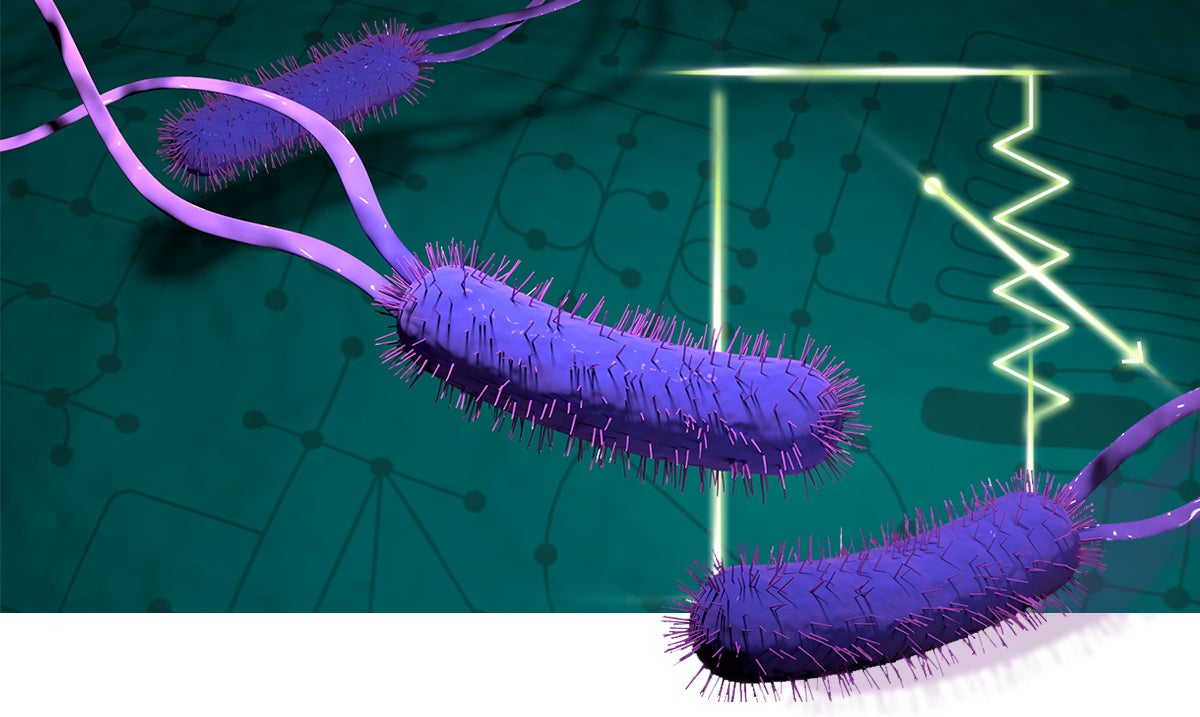BREAKING BIOFUEL
BARRIERS
Researchers want to make it easier to convert plants into fuel.
By Omar Shamout
THE PROBLEM: BIOCROP GROWTH AND SICK BACTERIA
Biocrops are agricultural crops developed specifically for use as raw material from which biofuels, such as ethanol, can be developed. By 2024, the global biofuels market is expected to grow to almost $154 billion according to Statista as demand grows in order to mitigate major concerns of global warming created by fossil fuels. One of the barriers to creating biofuels that are cost competitive with petroleum is that biocrops must be grown on relatively infertile land so as not to compete with land use for food crops. What’s more, bacteria cells used to convert plant material into ethanol die due to the overproduction of metabolites — small molecules produced during regular biochemical functions.
To optimize biocrop growth, The U.S. Department of Energy, or DOE, has prioritized research to develop a fundamental understanding of soil microbes and cell metabolism.
“Poor growth of biocrops on marginal lands is one of the leading factors holding the biofuel industry back at the moment,” said the study’s co-author William Cannon, an adjunct math professor at UCR and computational scientist at Pacific Northwest National Laboratory.
THE SOLUTION: CREATING NEW TOOLS TO BETTER UNDERSTAND CELLULAR METABOLISM
Cannon and UCR researcher Mark Alber received a three-year, $2.1 million grant from the DOE to develop mathematical and computational modeling, artificial intelligence algorithms, and experiments to better understand the chemical reactions involved in cellular metabolism, the process that fuels life in cells in which enzymes break down and build fats, proteins, energy carriers, and genetic information. For example, the researchers employed mathematical control theory, a field of applied mathematics used to understand how systems control themselves, as well as machine learning to predict which enzymes needed to be controlled to prevent excessive buildup of metabolites.
“This way, the metabolite concentrations don’t get so high that the liquid inside the cell becomes thick and gooey like molasses, which could cause cell death,” Cannon said.
THE IMPACT: CHEAPER BIOFUELS THAT SAVE THE PLANET AND MORE
Knowing which enzymes need to be prevented from overproducing metabolites can help scientists design cells that produce more of the nutrients that plants need to grow. This insight could lead to organisms that are more efficient at converting plants into biofuels, thereby lowering their cost. The ability to learn how cells regulate and control themselves could also help develop new strategies for combating diseases — and on a broader scale, the fundamental science of biology. Results were presented in a paper published in December 2020 by the Journal of the Royal Society Interface.
“We’re focused on bacteria, but these same biological mechanisms and modeling methods apply to human cells that have become dysregulated, which is what happens when a person has cancer,” said Alber, study co-author and distinguished professor of mathematics. “If we really want to understand why a cell behaves the way it does, we have to understand this regulation.”
Alber, Cannon, and Associate Professor of Biology Joel Sachs organized a session at the 2021 American Association for the Advancement of Science Annual Meeting to emphasize the broader impact of combined experimental and computational approaches in biology.
Jules Bernstein also contributed to this story.
Illustration by Nathan Johnson, Pacific Northwest National Laboratory.
NOVEL MODELS
This project is part of broader initiatives underway in the newly established UCR Interdisciplinary Center for Quantitative Modeling in Biology. The center’s 25 faculty members develop comprehensive predictive quantitative models of complex biological systems. All projects combine quantitative experiments, novel image analysis, modeling and statistical approaches, and build upon the mutually complementary strength of UC Riverside researchers with support from collaborators at other institutions. The center will virtually host the annual meeting of the Society of Mathematical Biology in June.


